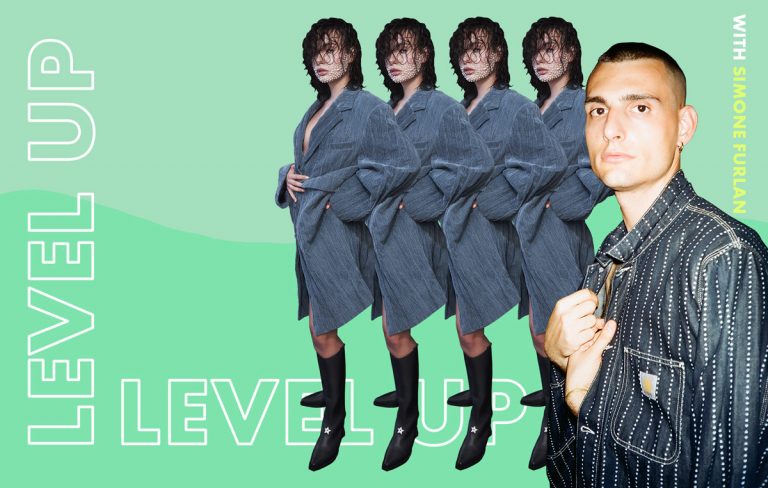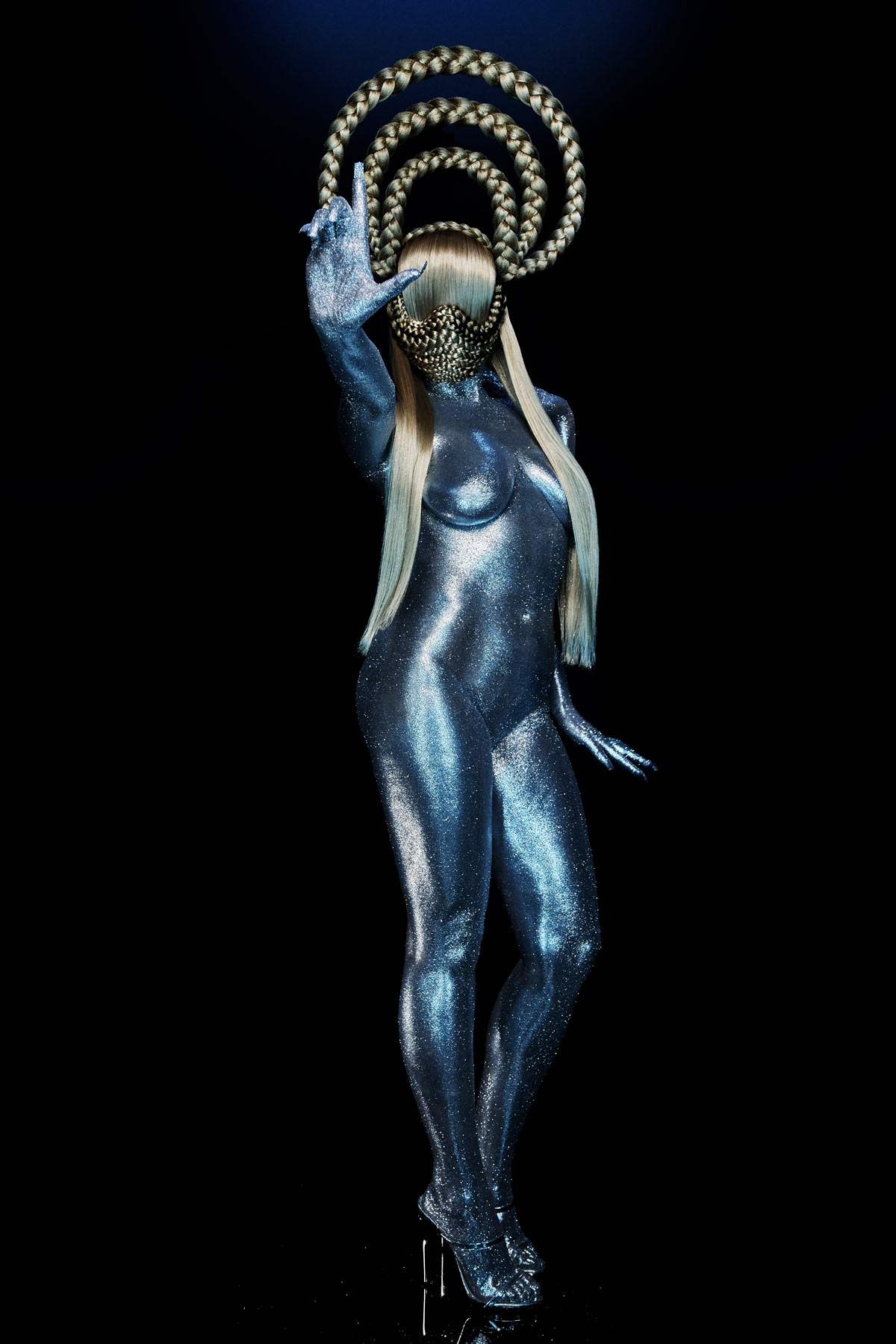How to become a fashion stylist with freelance stylist and art director Simone Furlan

When it comes to finding a job in the fashion industry, many talented creatives often mention the struggle that comes with finding a clear path to their dream profession. The problem is, they don’t know where to start, and that’s completely understandable when few people in the industry are willing to share their best-kept secrets. Are you regularly ahead of the up and coming trends within the fashion industry? Are you looking for clearer advice on how to become a freelance fashion stylist? You’ve come to the right place then! Art director and fashion stylist Simone Furlan teaches you everything you need to know about his stylist career and how to start your own in our new Level Up class:
Who is Simone Furlan?
Simone Furlan is a freelance fashion and celebrity stylist based in Milan, Italy. “As a teenager, my dream was to become a musical performer—a good one. I haven’t necessarily succeeded in that, but I am now an art director and stylist specialised in the music industry. At the end of the day, I didn’t fall too far from my dream job,” explains Furlan.
Before landing in the fashion industry, Furlan studied Art History in the Visual Cultures department at Goldsmith’s University in London, and briefly interned in contemporary art institutions and press offices. He interned at Peggy Guggenheim in Venice, Cinecittà Studios in Rome, Massimo De Carlo in London, and worked a few years for the fashion brand Giuseppe di Morabito in Milan.
“My collaborations involve working with artists, brands and magazines, depending on the type of project. I am currently focusing on bringing the ‘wow effect’ within my work and projects, inspired by visual art references and meaningful concepts. I am obsessed with culture, especially the history of visual art. I am definitely a fashion addict but not a victim; I prefer to re-watch Mugler’s and Mcqueen’s shows over and over again rather than running to buy the last collab collection. My aim is to quietly but steadily shock the viewer, while always featuring a veiled sense of chicness in everything I create,” shares the stylist.
Furlan has worked with music labels such as Universal Music Italia, Sony Music Italy and Warner Music Italy, over 40 musicians and producers, and many iconic brands and magazines, from Calvin Klein and Converse to i-D Italy and Rolling Stone Italia. In other words, the Italian stylist has already made a name for himself in the fashion and music industries.
What it takes to become a freelance fashion stylist
1. It's all about knowledge, baby!
“First things first, in order to start out as a stylist, you must constantly look at fashion shows and trends,” says Furlan. In fashion, just like in many other creative industries, it is crucial that you make the effort to learn about previous trends, including the history of fashion, in order to become able to draw upon those references.
Furlan recommends aspiring stylists to really delve into visual cultures in general and not just fashion: “You must have a lot of references to create the perfect look for the perfect shoot. In my case, for example, I didn’t study fashion styling or fashion design. I graduated in history of art, and that means I have a lot of references I can look at when I’m doing my work. But I had to study by myself, I had to learn a lot of things that people learned at university through different fashion-oriented courses.”
2. Make a name for yourself through personal projects
“You have to make a name for yourself and build a very strong identity. In order to do that, you need to stay focused on the message you want to convey with that look and that image,” explains Furlan.
In his case, when he first started out as a fashion stylist, Furlan decided to collaborate with a photographer friend, Mattia Guolo. Together, they created a project titled ‘Devus’ where they could explore some specific ideas that they felt they couldn’t explore in their respective jobs.
“Create images, post them on Instagram—you have to post and make your work public,” Furlan further explains. You guessed it, trying to be mysterious behind a private Instagram account won’t get you very far as a stylist…

3. Work with moodboards... but don't go over-the-top
As Furlan shared with Screen Shot, it’s easy for a stylist to think that they have a clear image in mind of exactly what message they want to convey through their work. But as soon as they’re working on the shoot, they might realise that this image wasn’t defined enough after all.
“There’s a gap between the mental world and the reality,” says Furlan. That’s where moodboards come in handy: “They can really help you focus on an idea and make the images you want to create clearer.”
But when it comes to creating the perfect moodboard, make sure you carefully pick your images—as Furlan explains, don’t pick too many. Instead, select the most “specific and eloquent images in order to convey the message you want to convey.”
4. Work on your organisational skills
As a successful stylist, you’ll soon realise that free time comes very rarely in your agenda. That’s why, in order to remember to do everything you thought about, make sure to stay organised. “Sometimes you don’t have time to think. You must have an agenda where you can write all the things you have to do and all the things you have to remember because, during the month when you’ll be working, you’ll probably only have one minute to make some decisions.”





